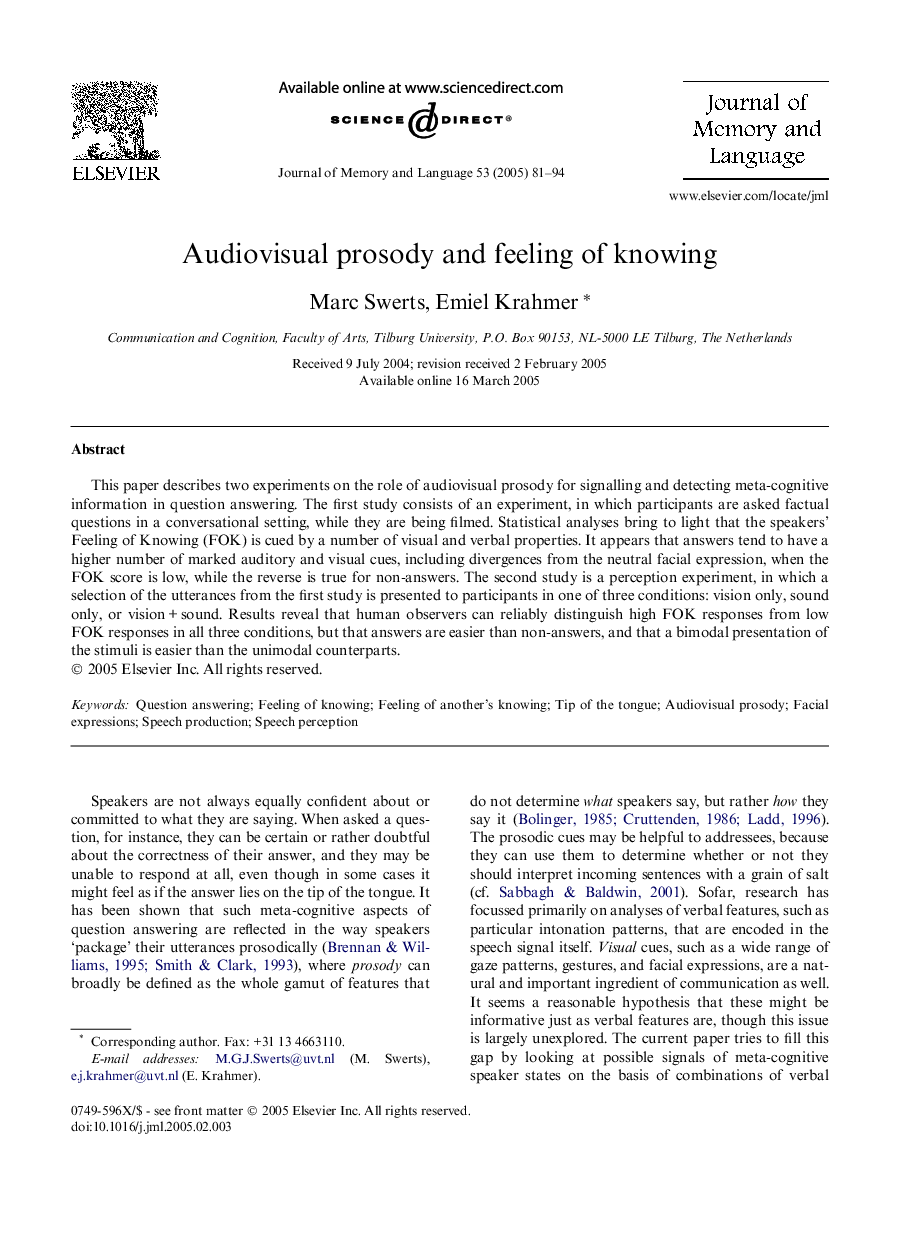| Article ID | Journal | Published Year | Pages | File Type |
|---|---|---|---|---|
| 10459829 | Journal of Memory and Language | 2005 | 14 Pages |
Abstract
This paper describes two experiments on the role of audiovisual prosody for signalling and detecting meta-cognitive information in question answering. The first study consists of an experiment, in which participants are asked factual questions in a conversational setting, while they are being filmed. Statistical analyses bring to light that the speakers' Feeling of Knowing (FOK) is cued by a number of visual and verbal properties. It appears that answers tend to have a higher number of marked auditory and visual cues, including divergences from the neutral facial expression, when the FOK score is low, while the reverse is true for non-answers. The second study is a perception experiment, in which a selection of the utterances from the first study is presented to participants in one of three conditions: vision only, sound only, or vision + sound. Results reveal that human observers can reliably distinguish high FOK responses from low FOK responses in all three conditions, but that answers are easier than non-answers, and that a bimodal presentation of the stimuli is easier than the unimodal counterparts.
Related Topics
Life Sciences
Neuroscience
Cognitive Neuroscience
Authors
Marc Swerts, Emiel Krahmer,
